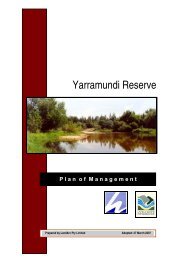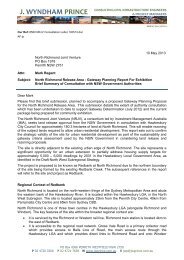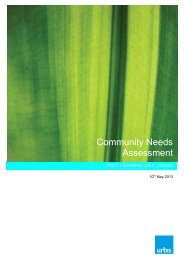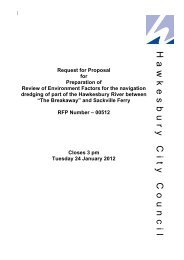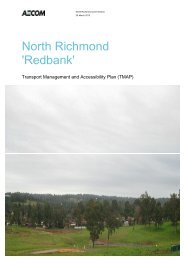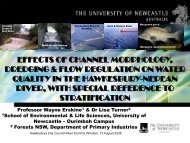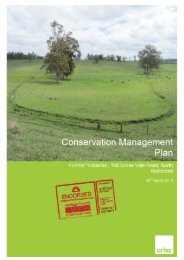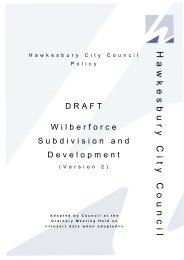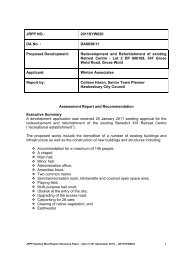Annual Report 2009/2010 - Hawkesbury City Council - NSW ...
Annual Report 2009/2010 - Hawkesbury City Council - NSW ...
Annual Report 2009/2010 - Hawkesbury City Council - NSW ...
Create successful ePaper yourself
Turn your PDF publications into a flip-book with our unique Google optimized e-Paper software.
Response to the issue<br />
<strong>Hawkesbury</strong> <strong>City</strong> <strong>Council</strong> relies of the provisions of State Environmental Planning Policy No 55-<br />
Remediation of Land (SEPP 55) in order to implement a contaminated land management framework<br />
within the <strong>Hawkesbury</strong> <strong>City</strong> <strong>Council</strong> area. SEPP 55 applies to all land within the <strong>Hawkesbury</strong> <strong>City</strong> <strong>Council</strong><br />
area.<br />
Future directions<br />
In determining all rezoning, subdivision and development applications, <strong>Council</strong> must consider the<br />
possibility of land contamination and the implications it has for any proposed or permissible future uses of<br />
the land. A precautionary approach will be adopted to ensure threat any land contamination issues are<br />
identified and dealt with early<br />
Acid Sulfate Soils<br />
Introduction<br />
Acid sulphate soils are widespread in our estuarine floodplains and coastal lowlands (including mangrove<br />
tidal flats, salt marshes and tea-tree swamps. As with salinity they are also directly affected by<br />
development<br />
Measures of Performance<br />
Measure<br />
1. Not increasing area affected by acid<br />
sulphate soils.<br />
How is the <strong>Hawkesbury</strong> performing?<br />
This measure of performance is<br />
used by the <strong>Hawkesbury</strong> <strong>City</strong><br />
<strong>Council</strong> through the implementation<br />
of the Local Environmental Plan.<br />
Current status and trends<br />
The trend is stable because the good quality information on the location of potential acid sulphate soils,<br />
combined with the planning and management measures that have been developed, means that the<br />
creation of actual acid sulphate soils can be avoided.<br />
Response to the issue<br />
Land that may contain potential acid sulfate soils has been identified from maps provided by the former<br />
<strong>NSW</strong> Department of Land and Water Conservation. These maps, known as Acid Sulfate Soils Planning<br />
Maps, establish 5 classes of land based on the probability of acid sulfate soils being present (Class 1<br />
being the most likely and Class 5 being the least likely).<br />
Clause 37A of thee <strong>Hawkesbury</strong> Local Environmental Plan 1989 states a person must not, without the<br />
consent of the <strong>Council</strong>, carry out works described in the following table:<br />
Future directions<br />
Preliminary assessment is required for those development applications seeking consent for works<br />
described and proposed to be located on land classified vulnerable. An acid sulfate soils management<br />
plan is obtained if required and apply best management guidelines for rectification. Acid Sulfate Soils<br />
Assessment Guideline, August 1998, which forms part of the Acid Sulfate Soils Manual.<br />
Page 80<br />
<strong>2009</strong>/<strong>2010</strong> <strong>Annual</strong> <strong>Report</strong>



